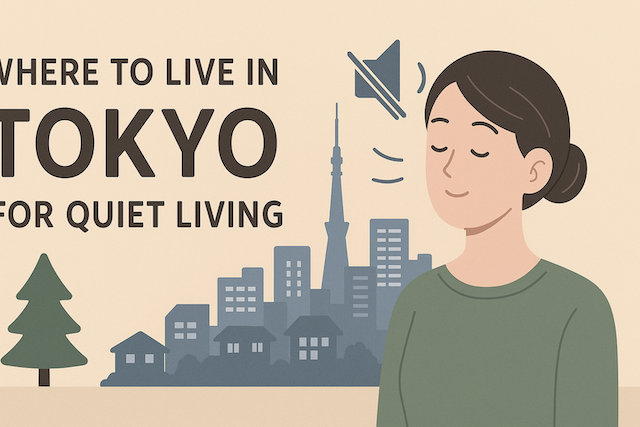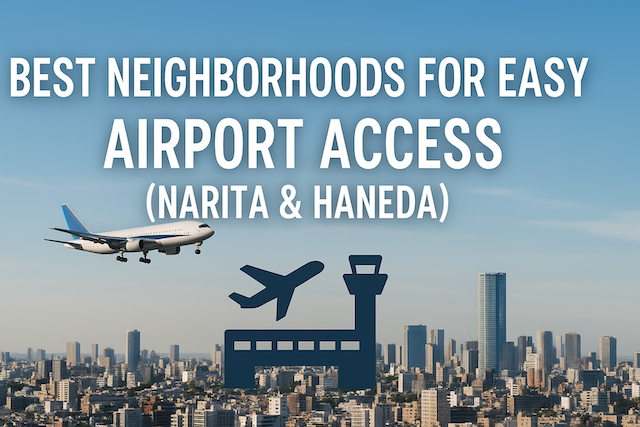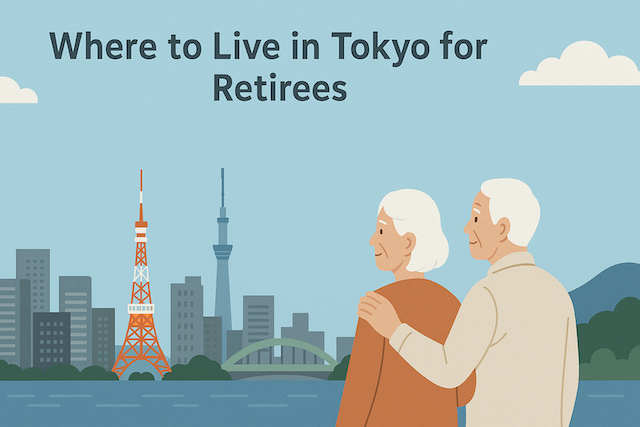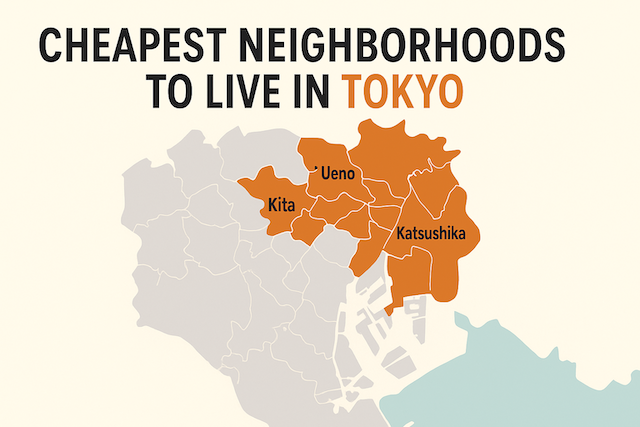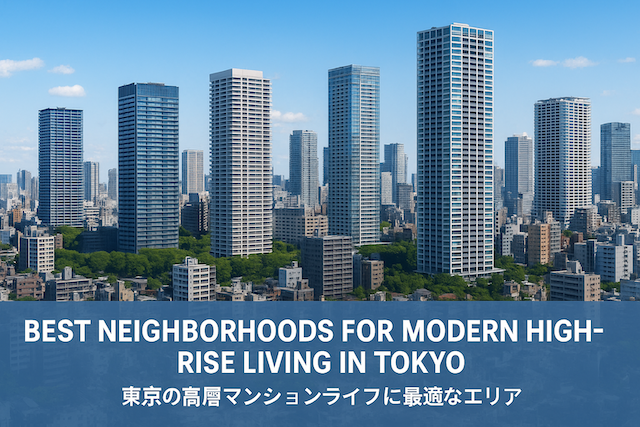Best Neighborhoods for Short-Term Stays in Tokyo
Tokyo is one of the most dynamic cities in the world—a place where tradition meets innovation, where neon-lit streets coexist with serene temples. For short-term visitors—whether tourists, business travelers, or digital nomads—choosing the right neighborhood can make all the difference in how you experience the city. From bustling entertainment districts to quiet local areas with convenient access, Tokyo offers a wide variety of neighborhoods suited for short-term stays.
This guide explores the best neighborhoods for short-term stays in Tokyo, considering convenience, atmosphere, accessibility, accommodation options, and overall experience.
Shinjuku: The Heart of Tokyo’s Action
Shinjuku is one of the most popular areas for short-term visitors due to its unmatched energy, convenience, and range of accommodations. It’s a major transportation hub, with easy access to almost every part of Tokyo and even nearby cities like Yokohama and Hakone.
Why It’s Great for Short-Term Stays
Shinjuku Station is one of the busiest in the world, offering connections to JR lines, metro lines, and even airport express services. This makes it perfect for travelers planning to explore multiple areas in Tokyo.
Shinjuku also offers an endless variety of entertainment—restaurants, izakayas, karaoke, bars, and department stores line the streets. The Kabukicho area is famous for nightlife, while Shinjuku Gyoen Park offers a green oasis just minutes away.
Accommodation Options
Short-term visitors can find everything from capsule hotels and business hotels to serviced apartments and luxury hotels like the Park Hyatt Tokyo or the Hotel Gracery Shinjuku. Airbnb options are also plentiful.
Shibuya: Trendy and Convenient
Shibuya is Tokyo’s youthful and vibrant hub, famous for the iconic Shibuya Crossing and its fashion-forward culture. It’s perfect for travelers who want to experience Tokyo’s modern, energetic side.
Why It’s Great for Short-Term Stays
Shibuya offers easy access to major attractions and entertainment districts like Harajuku, Omotesando, and Ebisu—all within walking distance or a short train ride. It’s a great base for shopping, dining, and nightlife.
Shibuya Station has undergone massive redevelopment, with new commercial complexes like Shibuya Scramble Square and Shibuya Stream, which house restaurants, co-working spaces, and hotels.
Accommodation Options
From stylish boutique hotels like Shibuya Stream Excel Hotel Tokyu to co-living spaces and serviced apartments, Shibuya provides comfort and convenience for both short leisure trips and extended work stays.
Ginza: For a Luxurious and Central Experience
If you prefer a refined and elegant atmosphere, Ginza is one of Tokyo’s most upscale districts. It’s known for its luxury shopping, fine dining, and sophisticated design.
Why It’s Great for Short-Term Stays
Ginza is centrally located and close to major attractions such as the Imperial Palace, Tokyo Station, and Tsukiji Market. Its wide boulevards are lined with designer boutiques, art galleries, and Michelin-starred restaurants.
Despite its polished image, Ginza also offers accessible transportation—Tokyo Metro lines connect directly to Asakusa, Ueno, and Shibuya.
Accommodation Options
Expect high-end hotels such as The Peninsula Tokyo, Hyatt Centric Ginza, and boutique options like MUJI Hotel Ginza. While prices are higher than average, the level of comfort and service makes it worthwhile for short-term luxury stays.
Asakusa: Traditional Tokyo Charm
Asakusa is where you’ll find Tokyo’s historic roots. Home to Senso-ji Temple, one of the city’s most famous landmarks, it offers a nostalgic atmosphere that contrasts beautifully with modern Tokyo.
Why It’s Great for Short-Term Stays
Asakusa is ideal for those who want to experience traditional Japan without leaving the city. You can stroll through Nakamise Street for souvenirs and snacks, ride a rickshaw, or take a boat cruise along the Sumida River.
It’s also well-connected to Ueno, Akihabara, and Tokyo Skytree, all located just a few stops away on the metro.
Accommodation Options
The area has many mid-range hotels, traditional ryokans, and affordable guesthouses. Hotels like The Gate Hotel Kaminarimon offer great views and comfort, while capsule hotels and Airbnbs cater to budget-conscious travelers.
Ueno: Convenient and Cultural
Ueno is an excellent neighborhood for short-term stays if you value accessibility, affordability, and culture. It’s home to Ueno Park, which hosts several major museums, temples, and the famous Ueno Zoo.
Why It’s Great for Short-Term Stays
Ueno Station is a major hub for JR and Shinkansen lines, making it ideal for those traveling to northern Japan or planning day trips to Nikko. The neighborhood’s relaxed atmosphere also offers a more local feel compared to Shinjuku or Shibuya.
You can easily walk to nearby Ameyoko Market, a lively street full of food stalls and shops.
Accommodation Options
Ueno provides many business hotels, capsule hotels, and serviced apartments. Short-term travelers often choose Ueno for its value-for-money accommodations and easy access to Narita Airport via the Keisei Skyliner.
Roppongi: Ideal for Business Travelers and Nightlife
Roppongi is an international district known for its upscale dining, embassies, and nightlife. It’s a favorite among expats and business travelers staying short-term in Tokyo.
Why It’s Great for Short-Term Stays
Roppongi Hills and Tokyo Midtown offer not just offices but also art museums, luxury residences, and shopping centers. It’s a district that blends work and leisure seamlessly.
The nightlife scene in Roppongi is world-famous, offering a mix of local bars, international clubs, and rooftop lounges.
Accommodation Options
Serviced apartments and luxury hotels dominate this area, including Grand Hyatt Tokyo and The Ritz-Carlton Tokyo. Short-term serviced apartments like Oakwood or Somerset are perfect for longer business stays.
Ebisu: Relaxed Yet Trendy
Ebisu offers a calmer, more refined vibe than neighboring Shibuya. It’s known for its culinary scene, stylish cafes, and the Yebisu Garden Place complex.
Why It’s Great for Short-Term Stays
Ebisu strikes a great balance—it’s quiet enough for rest but close enough to entertainment areas. The Yamanote Line provides direct access to Shibuya, Shinjuku, and Tokyo Station.
Ebisu’s restaurants and craft beer spots attract both locals and international residents, giving the neighborhood a cosmopolitan but comfortable feel.
Accommodation Options
Boutique hotels and serviced apartments are common in this area. The Westin Tokyo, located at Yebisu Garden Place, offers luxury and convenience. Airbnb options also abound for short-term guests.
Akihabara: For Tech Lovers and Pop Culture Fans
Known as the “Electric Town,” Akihabara is a must for tech enthusiasts, gamers, and anime fans. It’s one of the most unique areas to stay in Tokyo.
Why It’s Great for Short-Term Stays
Akihabara is not just about electronics; it’s also a hub for themed cafes, manga stores, and collectibles. It’s centrally located, giving you quick access to Ueno, Asakusa, and Tokyo Station.
The area has transformed over the years into a vibrant neighborhood that welcomes both tourists and business travelers.
Accommodation Options
You’ll find a mix of capsule hotels, themed accommodations, and business hotels. Short-term stays are easy thanks to its compact layout and affordable options.
Ikebukuro: Affordable and Convenient
Ikebukuro is another major hub in Tokyo, offering convenience and affordability. It’s less touristy than Shinjuku or Shibuya but has a similar level of accessibility.
Why It’s Great for Short-Term Stays
The area features large shopping complexes like Sunshine City, as well as entertainment, dining, and cultural spots. Ikebukuro Station connects to several major train lines, making it easy to reach any part of Tokyo.
It’s a good balance between cost, comfort, and connectivity—ideal for families or long-weekend visitors.
Accommodation Options
There’s a broad range of hotels and short-stay apartments, including Tokyu Stay and APA Hotel branches. Many options cater specifically to foreign guests.
Meguro and Nakameguro: Local and Stylish
For those looking for a more local, peaceful experience, Meguro and Nakameguro are ideal. These areas are popular among creatives, young professionals, and expats seeking a balance of convenience and calm.
Why It’s Great for Short-Term Stays
Nakameguro’s riverside streets are lined with chic cafes, small boutiques, and independent restaurants. During cherry blossom season, the Meguro River becomes one of Tokyo’s most picturesque spots.
The area offers a relaxed but fashionable vibe—perfect for remote workers and travelers who prefer a slower pace.
Accommodation Options
You’ll find stylish Airbnb listings, boutique hotels, and serviced apartments designed for short-term tenants. While slightly pricier than outer districts, the lifestyle experience is worth it.
Final Thoughts
Choosing where to stay in Tokyo depends on your travel goals.
-
For convenience and nightlife: Shinjuku or Shibuya.
-
For business and sophistication: Roppongi or Ginza.
-
For culture and history: Asakusa or Ueno.
-
For local living: Ebisu or Nakameguro.
No matter where you stay, Tokyo’s transportation system makes exploring easy. Each neighborhood offers a distinct atmosphere and experience, ensuring that your short-term stay in Tokyo will be memorable, comfortable, and filled with discovery.
What are the best neighborhoods in Tokyo for short-term stays?
Excellent bases include Shinjuku (transport hub, nightlife), Shibuya (trendy, walkable), Ginza (luxury, central), Asakusa (traditional sights), Ueno (museums, value), Roppongi (business and nightlife), Ebisu (relaxed foodie scene), Akihabara (tech and pop culture), Ikebukuro (affordable connectivity), and Nakameguro/Meguro (local, stylish). Your ideal pick depends on priorities like transit, budget, ambiance, and proximity to specific attractions.
Which area is most convenient for first-time visitors?
Shinjuku and Shibuya are top choices thanks to extensive rail connections (JR and metro), plentiful dining, and easy access to other hotspots like Harajuku, Omotesando, and Shibuya’s Scramble Crossing. Tokyo Station and Ginza are also convenient for first-timers who value a clean, central grid with straightforward airport connections and quick links to many districts.
Where should I stay if I want a traditional Japanese atmosphere?
Asakusa delivers classic Tokyo with Senso-ji Temple, Nakamise shopping street, and Sumida River cruises. You’ll find small ryokan-style stays, tatami rooms, and quieter evenings compared with the big hubs. Ueno can also work, pairing museums and old-town pockets with easy transit, plus good value hotels and quick rides to Asakusa and Akihabara.
What’s the best neighborhood for nightlife?
Shinjuku (Kabukicho, Golden Gai) and Roppongi (clubs, late-night dining) lead for big nights out. Shibuya offers youthful bars, live venues, and late eateries. If you enjoy high-end lounges and cocktail bars, Ginza and Aoyama have refined options. Always check last-train times or plan for taxis after midnight, especially if staying farther out.
Which areas are most suitable for business travelers?
Roppongi (close to embassies and offices), Toranomon/Shimbashi (near business districts), Tokyo Station/Marunouchi (bullet train access), and Ginza (premium hotels, seamless transit) are excellent. Serviced apartments are common around Roppongi and Akasaka, while business hotels cluster near major stations, making short commutes and airport transfers efficient during tight schedules.
Where can I find the best value for money?
Ueno and Ikebukuro typically offer strong value with abundant business hotels and easy JR/metro access. Asakusa also presents good price-to-location balance, especially if you’re sightseeing. While Shinjuku and Shibuya command higher rates, you can still find reasonable business hotels or capsule options if you book early and stay flexible on dates.
Is Tokyo safe for short-term visitors, and which areas feel calm at night?
Tokyo is broadly safe with low street crime. For calm evenings, consider Ebisu, Nakameguro, Meguro, and residential pockets around Yoyogi or Kagurazaka. Even busier hubs like Shinjuku and Shibuya are generally safe; just use normal city smarts, avoid poorly lit alleys, and be cautious in nightlife-heavy zones late at night.
What neighborhoods are best for food lovers?
Ebisu excels for diverse dining from izakaya to upscale. Shinjuku and Shibuya have endless options for all budgets. Ginza is great for sushi, kaiseki, and refined counters, while Asakusa offers classic street snacks and traditional sweets. Nakameguro and Daikanyama deliver stylish cafés and bakeries along photogenic streets perfect for leisurely meals.
Where should I stay if I plan day trips by Shinkansen?
Tokyo Station/Marunouchi or nearby Ginza are ideal for bullet train day trips to Kyoto, Osaka, or Sendai. Ueno works well for northern routes and the Keisei Skyliner to Narita. Staying near these hubs saves time in the morning and makes returning with luggage or souvenirs simpler after long day excursions.
Which neighborhoods are best for shopping?
Ginza is the luxury flagship district; Omotesando/Aoyama feature design boutiques; Shibuya and Harajuku focus on youth fashion and streetwear; Shinjuku delivers department stores and camera megashops. For electronics and hobby gear, Akihabara is unmatched. If you want market-style bargains and snacks, Ueno’s Ameyoko is lively and budget-friendly.
Are short-term apartments or serviced apartments easy to find?
Yes, especially around Roppongi, Shinjuku, Shibuya, and Tokyo Station areas. Brands like Oakwood, Somerset, and Tokyu Stay provide amenities such as kitchenettes, laundry, and weekly cleaning. These options suit stays of a week or longer, bridging the gap between hotels and traditional rentals while offering more space and flexibility.
How important is proximity to a JR or metro line?
It’s crucial. Being within a 5–10 minute walk of a major station dramatically improves your experience, reducing transfers and saving time. Hubs like Shinjuku, Shibuya, Ueno, Tokyo, and Shinagawa connect you citywide and beyond. If you prefer quieter streets, pick a sub-center with one reliable line and plan transfers.
Where should I stay for cherry blossoms or seasonal scenery?
Nakameguro is famous for riverside cherry blossoms, while Ueno Park and Chidorigafuchi (near the Imperial Palace) are iconic hanami spots. Shinjuku Gyoen, close to Shinjuku station, also shines in spring and autumn. Booking early is essential during peak bloom weeks, as rates rise and popular hotels sell out quickly.
What’s a good base if I’m into tech, anime, or gaming?
Akihabara places you steps from electronics megastores, retro game shops, figure stores, and themed cafés. It’s also minutes to Ueno and Asakusa for sightseeing variety. Ikebukuro is another option, with anime and gaming scenes around Sunshine City and Otome Road, plus great transit and a wide lodging price spectrum.
How far in advance should I book, and what’s peak season?
Book 4–8 weeks ahead for popular areas; longer for peak times (late March–early April for cherry blossoms, late July–August for school holidays, and New Year). Major events and long weekends also tighten availability. Flexible dates, weekday stays, and considering sub-centers (Ebisu, Ikebukuro) help secure better rates.
What’s the best neighborhood for a quiet, “local” feel without sacrificing access?
Nakameguro, Meguro, and Ebisu strike a balance: peaceful streets, tasteful cafés, and swift access to the Yamanote Line or Tokyo Metro. These areas suit remote workers and couples who value atmosphere over neon intensity, yet want fast links to Shibuya, Shinjuku, and central business or cultural districts.


